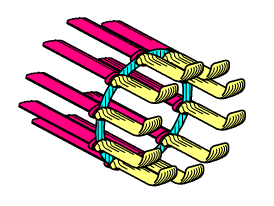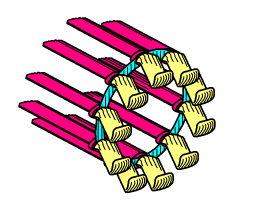

Using the intermediate support ring at the end of the rotor permits to install winglets on it that are not supported at their ends. These winglets can well withstand the bending forces, having a short length.

An option of this is represented in the chart above. Here, the inner wings of the pink color are supported by the installed intermediate ring of the cyan color on their intermediate fairings and may have a full length or be linked from components. Short winglets of the light yellow color are installed after the intermediate ring on their intermediate fairings and have wing fences at their ends. These wing fences decrease the induced drag by delaying generation of the end wings vortices, similarly the wing fences in a conventional airplane.

The chart above represents another example of this option. Here, swept winglets are used, which also have the wing fences. But, these winglets are swept to the forward. Such a winglet has a significantly shifted to the forward the center of force relative its pivot, and so this induces a significant positive moment. This moment provides an advantage in the cruise flight, where exists a significant negative moment on the entire wing. So, the forwardly swept winglet will partially compensate for the negative moment, leaving the steering moments for the wings below a moderate level. The optimal level of this kind compensating is about 70 percent, since more high moments from these winglets will create too high positive steering moments during runway operations.
Copyright © 2018-2023 Yuri Feldman - All Rights Reserved